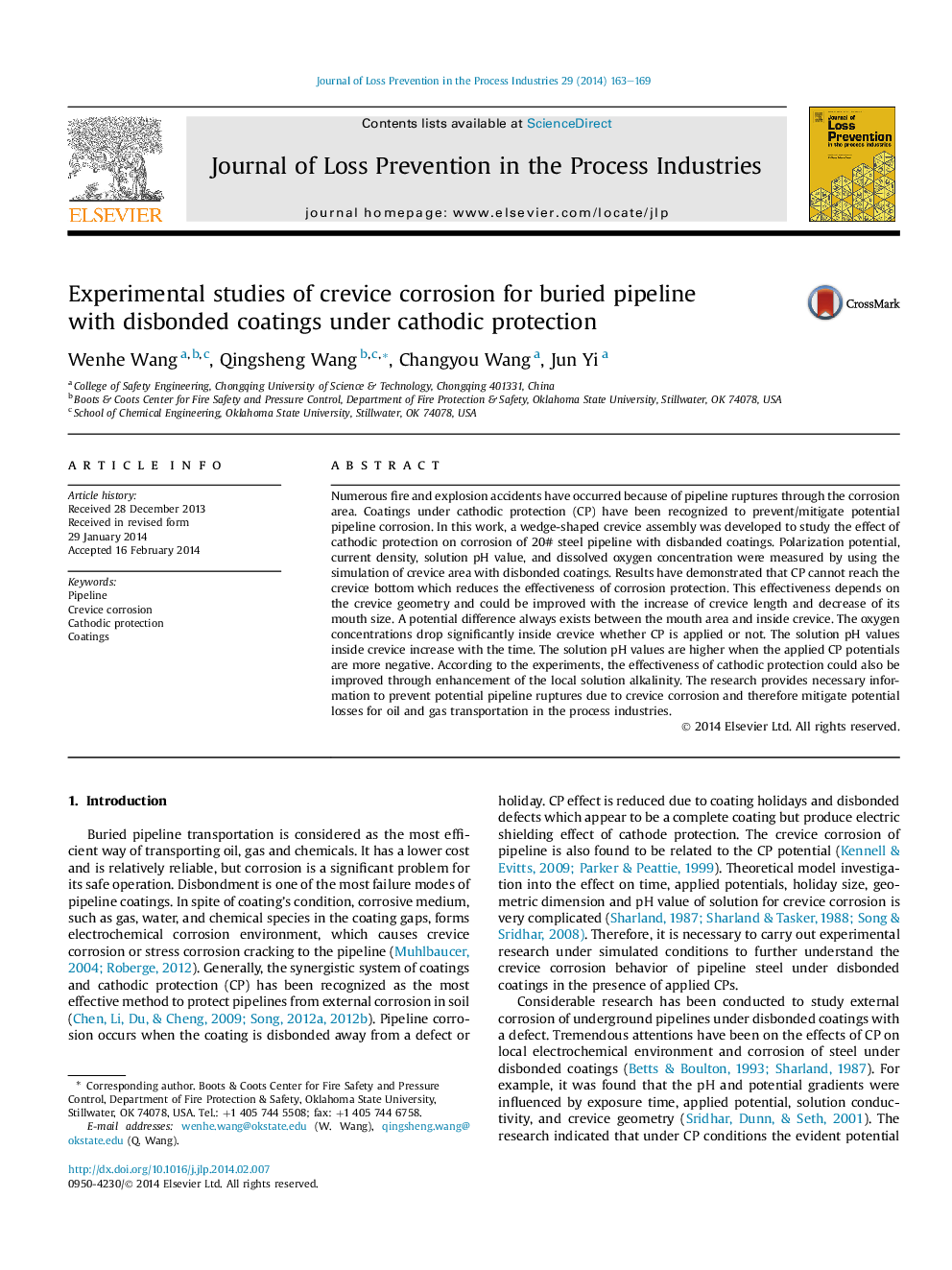| Article ID | Journal | Published Year | Pages | File Type |
|---|---|---|---|---|
| 586290 | Journal of Loss Prevention in the Process Industries | 2014 | 7 Pages |
•Pipeline crevice corrosions with disbonded coatings were studied.•Effectiveness of corrosion protection was evaluated experimentally.•Protection effectiveness depends on cathodic potential and crevice geometry.
Numerous fire and explosion accidents have occurred because of pipeline ruptures through the corrosion area. Coatings under cathodic protection (CP) have been recognized to prevent/mitigate potential pipeline corrosion. In this work, a wedge-shaped crevice assembly was developed to study the effect of cathodic protection on corrosion of 20# steel pipeline with disbanded coatings. Polarization potential, current density, solution pH value, and dissolved oxygen concentration were measured by using the simulation of crevice area with disbonded coatings. Results have demonstrated that CP cannot reach the crevice bottom which reduces the effectiveness of corrosion protection. This effectiveness depends on the crevice geometry and could be improved with the increase of crevice length and decrease of its mouth size. A potential difference always exists between the mouth area and inside crevice. The oxygen concentrations drop significantly inside crevice whether CP is applied or not. The solution pH values inside crevice increase with the time. The solution pH values are higher when the applied CP potentials are more negative. According to the experiments, the effectiveness of cathodic protection could also be improved through enhancement of the local solution alkalinity. The research provides necessary information to prevent potential pipeline ruptures due to crevice corrosion and therefore mitigate potential losses for oil and gas transportation in the process industries.
